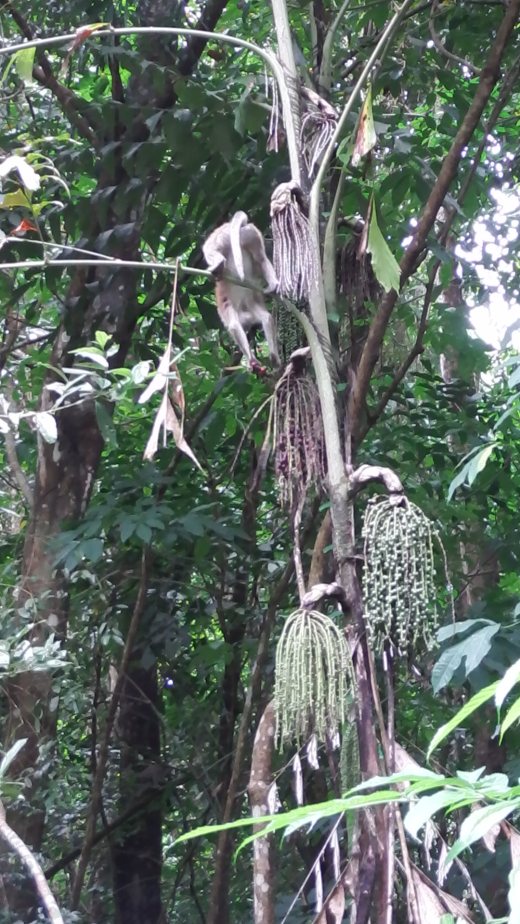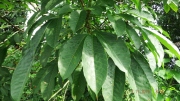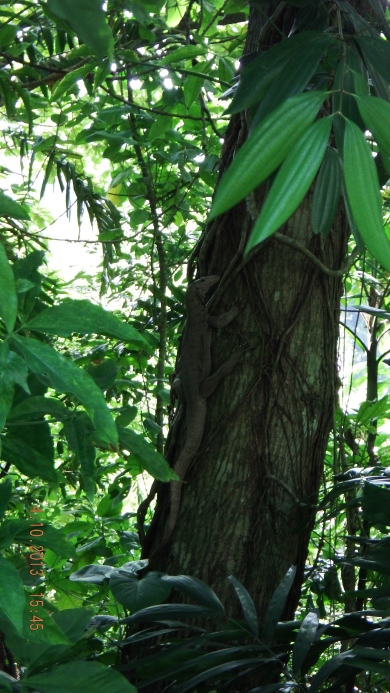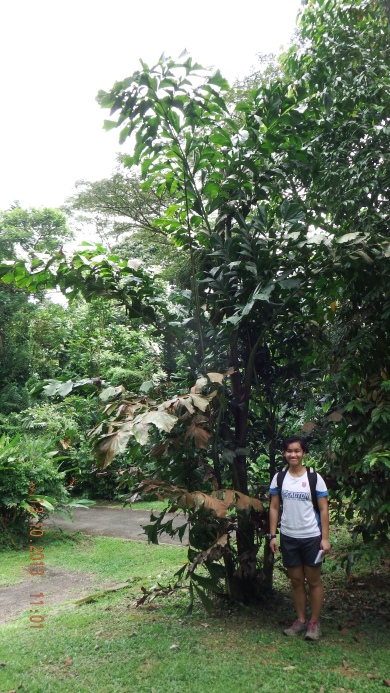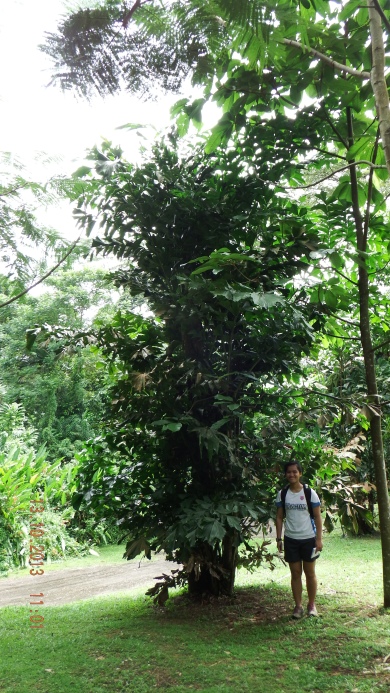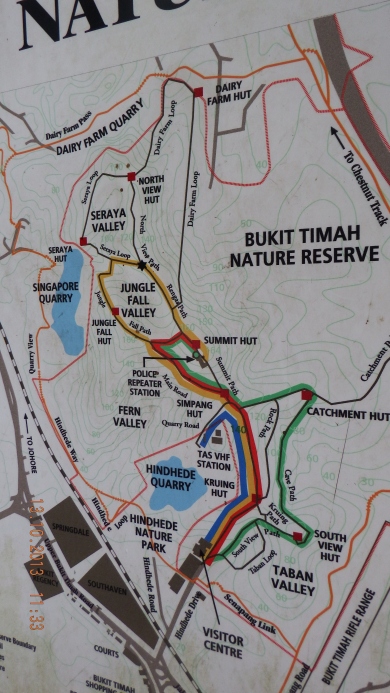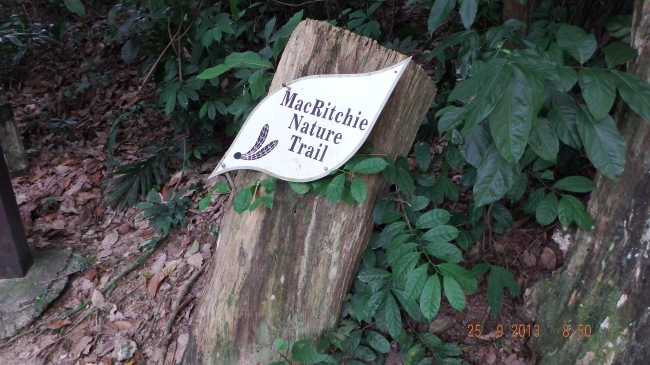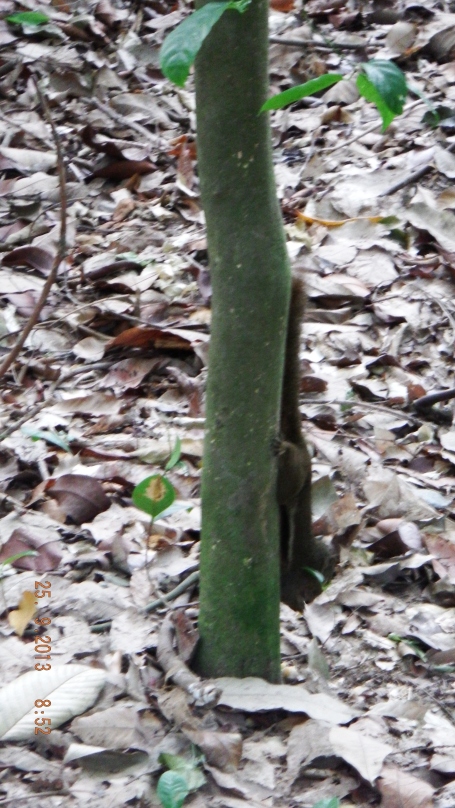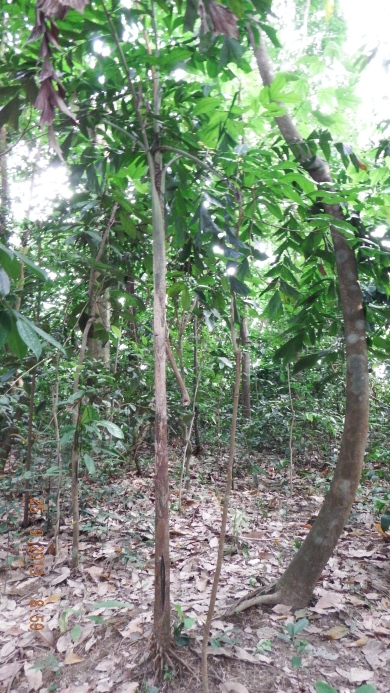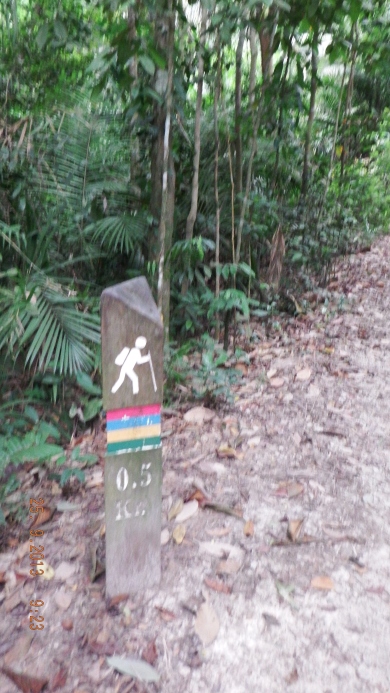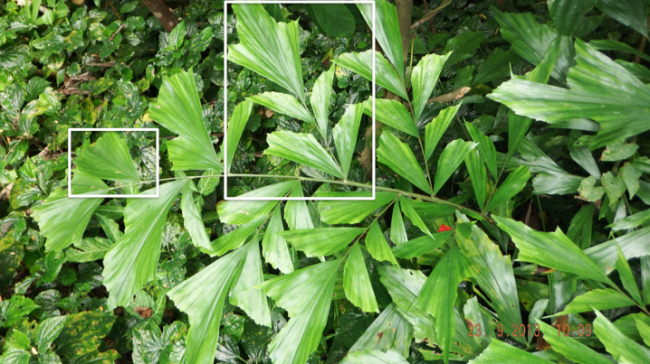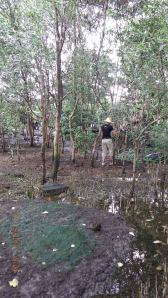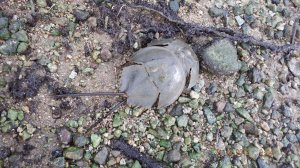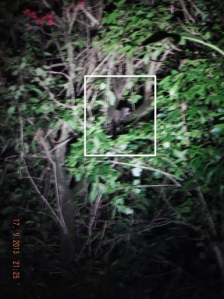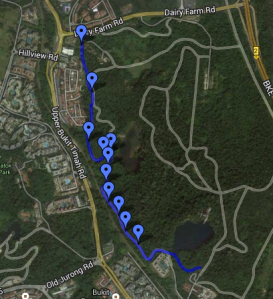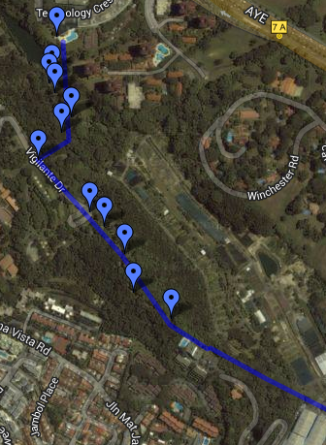The meeting was conducted during E-learning week at the newly renovated Department of Biological Sciences office at S2. The people present were Mr. Siva, my supervisor, Marcus, Tze Kwan and Weiting who collectively make up the Civet team, Bahiah and I, who have been dubbed as the Fishtail Palm girls and of course, Dr. Adrian Loo himself.
To be honest, I was extremely nervous before the meeting. I was dreading having to do a presentation on what I have researched so far and what my research question was. I was expecting a formally dressed, no-nonsense botanist. Lo and behold, Dr. Adrian Loo came dressed in a shirt and either berms or slacks.
Suffice to say, my nervous levels went way down. It went down even further back to normal heart rate as the meeting went on. As usual, the meeting was not exactly a meeting in the formal sense where there was a presentation. It was more like an informal conversation where ideas and questions were posed. I knew that the objective of the meeting was to tap into Dr. Loo’s knowledge and perhaps have him help us refine our research questions (or better yet, give us a research question). However, the topics varied from an anecdote of someone’s trip to Sri Lanka to a debate on what “yin” and “yang” meant for bat taxonomy. Basically, the meeting consisted of so many conversation topics that I found it hard to write the minutes of meetings later on.
I guess that is how ideas, solutions and more questions are borne. I used to think that researchers and scientists were a serious bunch but in reality, they are a pretty gregarious bunch. At least the ones I come into contact with. Anyway, in case anyone is curious to know what had been discussed regarding the fishtail palms, below is the summary of topics:
1. Phenology of Caryota mitis
Under phenology, questions on what pollinates and what disperses Caryota mitis were posed. In the case of dispersers, the possible candidates were broadly divided into two categories, one is the birds and the other is the mammals.
Bird dispersers can be classified according to their gape whereas the mammal dispersers can be classified according to their size, whether small or medium in the context of Singapore. Examples of mammals were civets, ungulates, primates or bats.
It was postulated that the birds and the mammals formed a guild thereby possibly facing competition for the same resource or other temporal restrictions.
In addition, a study on the timing of phenology, for example whether male flowers first before female flowers or vice versa, may illuminate the effects of it on the distribution of C. mitis.
2. Morphology of Caryota mitis
It is essential to do a baseline study on the morphology of Caryota mitis. This includes stem height, girth, number of leaves and size of leaves. Measurements of a good sample size may produce an average measurement.
Number of leaves may be an indicator of the age of the individual plant hence it can be a good estimate of the plant age.
3. How to differentiate juvenile plants from an adult plant
Growth form also needs to be studied. It is essential to identify the characteristics that differentiate a juvenile from an adult or vice versa to facilitate future identification process during future projects or even guided nature walks.
4. Counting of fruits and seeds in one fruit bundle
This is a possible research question suggested by Dr. Adrian Loo. The number of fruits may be an indicator of the level of productivity of the plant.
5. Infructescence
Another possible research question would be what determines the successful transition from flower to fruit. Whether transition from flower to fruit upon pollination is automatic remains to be ascertained. In addition, there is the added question of the time taken for the transition from flower to fruit.
6. Possible calorie study of the fruits of Caryota mitis
A calorie study using a bomb calorimeter to measure the energy content of the fruits was proposed. This may further illuminate the importance of Caryota mitis in the diets of its dispersers.
7. Vegetative biology and Reproductive biology
Vegetative and reproductive production are characteristic of Caryota mitis. However, further information such whether both are ongoing at the same time or one is repressed when the other is ongoing are possible questions.
8. Restoration ecology
The significance of this study on Caryota mitis will contribute to important knowledge on forest recovery. The studies done on Caryota mitis may be adapted and applied to botany studies of other forest species.
All in all, it turned out to be a great brainstorming session!

